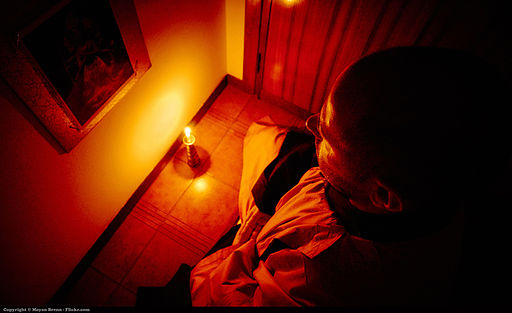
(I made this fudo [look left; hanging from the bell] in 2009, for friends in Spokane County. When I took care of their farm for a few weeks 6 years later, I posted a photo of it here. It was still looking pretty smart then, all things considered.
On a visit last month I noted that 16 years' continuous duty in the desert hadn't done it any favours. But given the conditions, the old warrior still serves our patron well.)






_Bodhisattva_-_Walters_25256_(2).jpg)

















